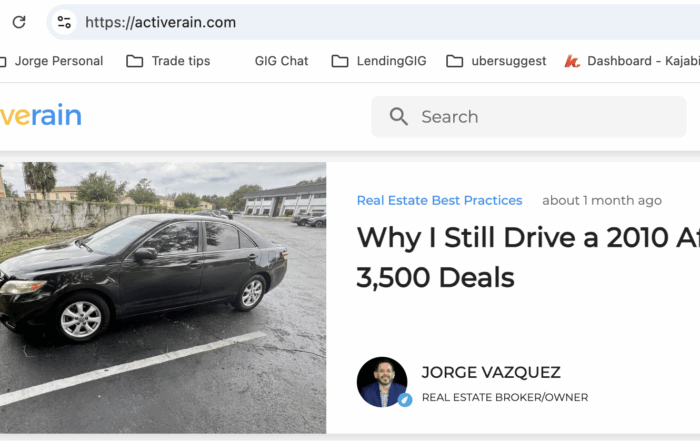Real Estate Capital Stack Explained Like You’re Ten (With a Cheeseburger!)
Alright kiddo, grab your juice box and let’s talk about something grown-ups make waaaay too complicated: the real estate capital stack. Sounds like something a wizard made up, right? Nope. It’s just a fancy way to explain where the money comes from in a real estate deal, and who gets paid first. But to make it way easier (and more fun), we’re gonna explain it using something you already know and love:
🍔 The Cheeseburger Analogy
You know how a cheeseburger has layers? Bun, lettuce, tomato, cheese, juicy beef patty, and the bottom bun holding it all together? Each part is different, but when you stack them just right, boom—you’ve got a perfect burger.
Well, in real estate, people build a money burger to buy things like apartment buildings or rental houses. That burger is called the capital stack. Each layer is a type of money used to pay for the deal, and just like the burger, every piece has its place.
🪟 Let’s Build the Capital Stack (aka The Money Burger)
1. Bottom Bun = Senior Debt (Big Bank Loan)
-
This is the first money used to buy a property.
-
Usually comes from a bank or lender.
-
The bank wants to be paid back first before anyone else.
-
If the deal goes bad, they take the property back. They are the bossy part of the burger.
Example: Imagine you’re buying a $1 million building. The bank gives you $600,000. They go on the bottom of the stack. No one gets anything until the bank gets their money back!
2. Cheese = Mezzanine Debt (Extra Spicy Loan)
-
This layer goes on top of the senior debt.
-
It fills the gap when the bank won’t cover everything.
-
It’s riskier, so the people giving this money charge a higher interest.
-
They get paid after the bank, but before other investors.
Example: If you still need $150,000 after the bank, a mezzanine lender might give it to you—but they want more return (like 12-15% instead of 6%). They take more risk, so they want more cheese!
3. Lettuce & Tomato = Preferred Equity (Fancy Salad Money)
-
These are investors who put in money with some rules.
-
They get paid before the last group (common equity), but after the debt.
-
They might not have control of the deal, but they want a guaranteed slice of the pie.
Example: Your aunt says, “I’ll give you $100,000, but I want to be paid 10% before anyone else gets profits.” That’s preferred equity.
4. Beef Patty = Common Equity (The Big Dreamers)
-
These are the people who run the deal and put in the last of the money.
-
They get paid last, but they also have the most potential profit.
-
It’s risky, but the reward can be huge.
Example: You (the boss burger builder) put in $150,000. If the deal makes big money, you keep the leftovers after everyone else gets paid. Sometimes you eat like a king. Sometimes, you get crumbs.
🎩 Why Should You Care?
Okay, so you’re not buying buildings yet, but here’s why the capital stack is cool:
-
It tells you who gets paid first and who takes the most risk.
-
It helps investors know where they stand.
-
If you mess up the stack, the burger falls apart—aka the deal flops!
✨ Real-Life Capital Stack Example: The $1 Million Building
Let’s say you want to buy an apartment building for $1,000,000. Here’s how you might stack the money burger:
-
Bank Loan (Senior Debt) = $600,000
-
Mezzanine Debt = $100,000
-
Preferred Equity = $150,000
-
Your Money (Common Equity) = $150,000
Payment Order:
-
Bank gets paid first.
-
Mezzanine lender gets paid next.
-
Preferred investors get their 10%.
-
You (the common equity investor) get the rest.
If the building sells for $1.3M, you pay everyone else first, and you keep what’s left. If it sells for $900k? Uh-oh. You might get nothing. That’s the risk of being the patty.
🤔 Capital Stack vs. Waterfall
Some grown-ups get these mixed up. The capital stack is who put in the money and who gets paid in what order.
The waterfall is how profits get split when money starts flowing out.
Think of the capital stack as the layers of a cake, and the waterfall as who gets which slice when you cut it up.
⚡ Smart Tips for Future Investors
-
Start at the bottom of the stack if you want safety. (Like being the bank!)
-
Top of the stack = higher risk, higher reward. (More spicy, more profit… or more pain.)
-
Always know the stack before joining a deal. Don’t get into a burger without knowing what’s inside!
-
Ask questions like:
-
Who gets paid first?
-
What happens if the deal goes bad?
-
How much risk am I really taking?
-
🌊 Why Capital Stack Matters
Without it:
-
You don’t know where you stand.
-
You can lose money without realizing how.
-
You can’t structure deals that are fair or smart.
With it:
-
You can build bigger projects.
-
You can raise money from different people.
-
You can protect your money or go big for profit!
💪 Summary for Superstars
-
The capital stack is just the order of money used in a real estate deal.
-
Each layer has its own role, risk, and reward.
-
Like a burger, it must be stacked right to taste good (aka make money).
-
Know your place in the stack before joining a deal.
-
Want to play it safe? Be the bun (the bank). Want big wins? Be the patty (but be ready for the heat).
🎓 What to Do Next?
-
Learn more about investing basics.
-
Ask your mentor (or your real estate coach) to show you a deal’s capital stack.
-
One day, build your own burger!
Written by CEO of Graystone & companies & Coach of the Property Profit Academy
http://propertyprofitacademy.com
Keep it consistent, stay patient, stay true—if I did it, so can you! Ready to learn? Let me guide you at propertyprofitacademy.com – Jorge Vazquez, CEO of Graystone Investment Group & its subsidiary companies and Coach at Property Profit Academy
Pick your expert. Book your free 15-minute consult now. We are here to help!
Our Top Articles
Landlords, Listen Up: Florida’s A+ Economy Is Coming—Here’s Why 2025 Still Makes Sense
Jorge Vazquez2025-08-01T19:53:23+00:00July 31st, 2025|Comments Off on Landlords, Listen Up: Florida’s A+ Economy Is Coming—Here’s Why 2025 Still Makes Sense
Florida’s A+ Economy in 2026: What This Means for Landlords, Renters, and Real Investors Like Me By Jorge Vazquez, [...]
What It Really Takes for Agents to Make Millions in Real Estate
Jorge Vazquez2025-08-01T01:32:51+00:00July 31st, 2025|Comments Off on What It Really Takes for Agents to Make Millions in Real Estate
What It Really Takes for Agents to Make Millions in Real Estate Inspired by a Fellow Featured Agent—Kat Palmiotti [...]
Jorge Vazquez Featured on ActiveRain for Real Estate Insight
Jorge Vazquez2025-08-01T19:20:27+00:00July 31st, 2025|Comments Off on Jorge Vazquez Featured on ActiveRain for Real Estate Insight
Graystone Investment Group CEO Jorge Vazquez Featured on ActiveRain for Insightful Real Estate Blog Post [...]
Property Profit Academy:
✔ Learn to buy properties with little to no money down.
✔ Build a $10M portfolio step by step.
✔ Master strategies like BRRRR and house hacking.









